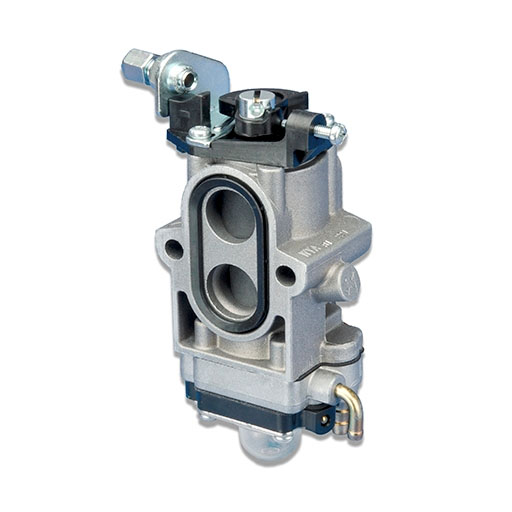


There is only one (x2 side by side) boost port, nothing else.
The x2 speed piston in the head should give some intetesting results, with volume changes at various points of the engine cycle. Should make the engine ingest more fuel air and help draw energy from expansion.
But this piston does not figure in the rated engine capacity, of the main piston. When the main piston is at TDC so is the small piston, when the main piston is at BDC, so again is the small piston at its TDC. So if the main piston sweeps 100cc the small piston has no relevance, according to how swept volume calculations are done.
Yes it relies heavily on a tuned pipe, perhaps even a variable one.

Unfortunately my mind is very limited and I cannot remember what name has a theory of cylinder filling which occurs due to the contractions or fluctuations of the cylinder, and not due to the pumping of the crankcase.
In your case the secondary piston would do a similar function.
Analyzing it in detail, the movement of the head piston in its second stroke per cycle has vast benefits, it can increase the effect of the negative wave of the exhaust and favor the cancellation of the mixture return to the crankcase.

I know that in this group there are people who know what this theory is called, which what it says is that the cylinder works like a lung "contracting and expanding"

I am an impatient person, excuse me for my curiosity.
You say that you will use carburettors (x2), these carburettors are standard (specific for stratified scavenging) or you plan to modify them a few simple ones.
Taking into account that the displacement is 100cc you can use two of these types



Im just using two mikuni carburetors, 16 bore I think. They will feed the two B ports, one each.
Because I have them in my shop, free.



I dont, air only.







The B ports are throttled, with carburetors, they feed the cylinder direct and the crankcase also.
A ports are just air, no throttling, just holes with a short tube to a belmouth. My HCCI seems to run like a diesel with load being controlled by fuel only. The carburetors, crank case and boost ports will take care of that at low speed, pipe will take overall gas flow control at high speed.
Who knows for sure? I want to find out hence the experimental build.
I have changed the head design (high speed piston) from the original experiments, should give more control on combustion.

The more details I get to know about his project, the more it resembles Tomio Iwai 1978 at the base.
Of course, they also have clear differences such as: the non-throttling of the air inlet in ports A, introducing the mixture through ports B and not through A, and the use of HCCI technology, inlet port to the cylinder and not to the crankcase



I was wrong, Tomio Iwai is not multi-ports

Hi Flettner.
It's just a suggestion. Since you have quite a bit of experience in sleeve valve motors and HCCI, why don't you try to put the two techniques together.
The suggestion that I make is that you use a sleeve valve in the head, in this case it would be similar or seem to this one: "Rotating Cylinder Valve (RCV) engine".
Why use that valve, to take advantage of the pumping of the head crankcase.
You tell us that the stroke is 16mm, taking into account that the diameter is 50mm, the displaced volume is 31cc.
Actually it would be 62cc since it would have 2 displacements.
When both pistons are at TDC and the main crank makes a 90º turn, we already know that the small one has made a 180º turn, which has made a compression in the head case "corresponding to those 31cc" (that compression would be stored in a plenum which would be controlled by the sleeve valve).
When the main piston is in BDC, the small one is in TDC and the main crank makes a 90º turn, we already know that the small one has made a 180º turn with which it has made a compression in the head case "corresponding to those 31cc" ( This would be the second compression and this, like the previous one, would also be stored in another plenum separate from the previous one).
Now we only need to release the mixture that we have stored in the plenums, that would be in the 90º that we have left to reach the TDC and that in turn the small piston also goes to TDC, it is in that section when the sleeve valve to to release it "as long as the trapped mixture is at a higher pressure than that in the cylinder"

Of course, it would not be to transform your HCCI engine into an OP engine, it is true that they have parts in common "both engines take advantage of the pumping of the two crankcases", but the differences are in the scavenging mode, since it would continue to maintain the cross flow in uniflow place.
It's just another way to perform a stratified scavenging on your HCCI engine.
There are currently 1 users browsing this thread. (0 members and 1 guests)
Bookmarks